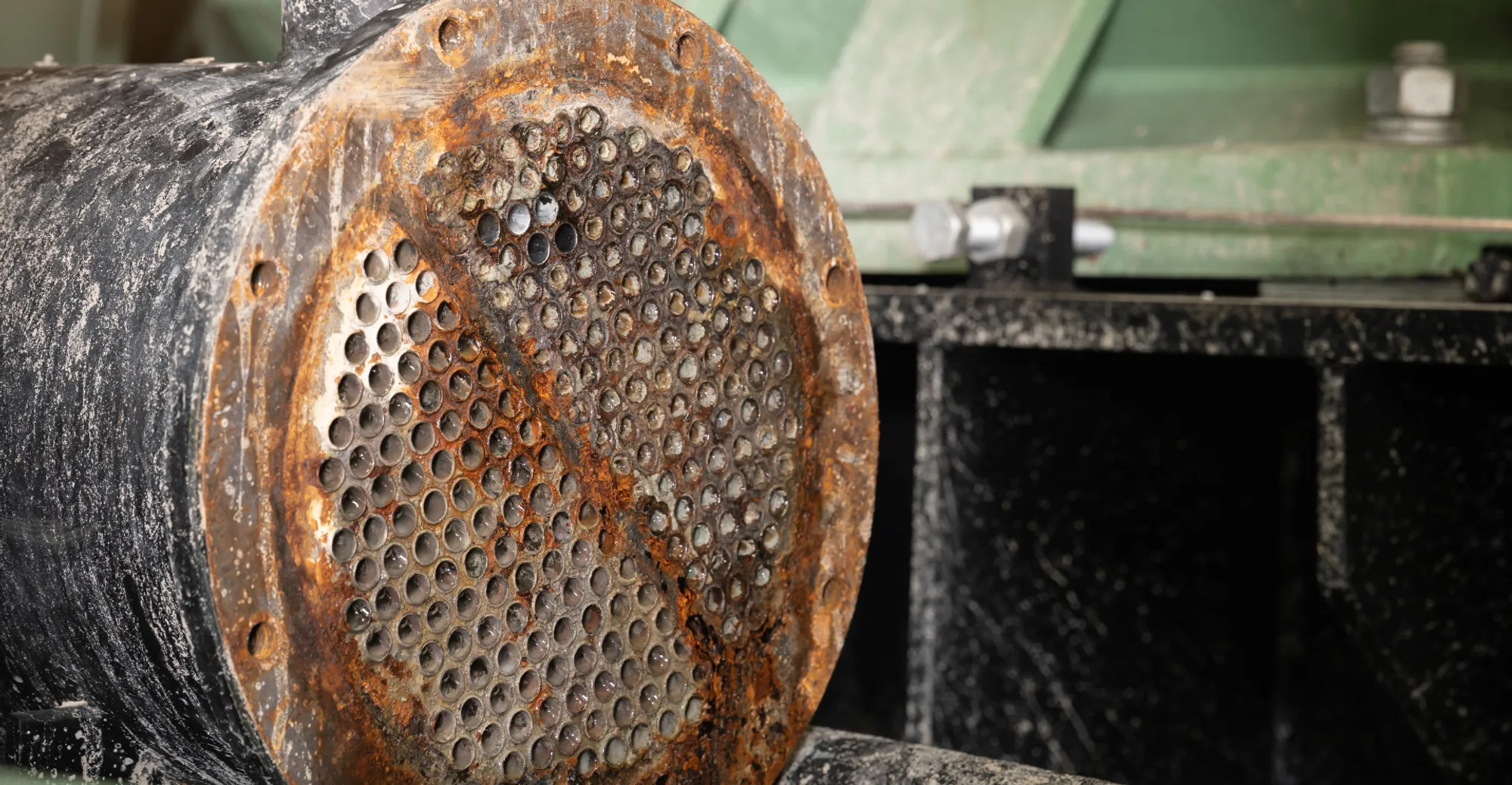
What causes seawater condenser fouling?
What causes seawater condenser fouling?
– by Sjoerd Post – 10/09/21
What is condenser fouling and how is it caused? This is the first of two articles on pollution in seawater-cooled condensers. In this blog you will discover how fouling originates and the different forms of pollution behind it.
Seawater cooling
Seawater cooling is used on most maritime cooling systems. The overheated and vaporised refrigerant is cooled in the condenser until it condenses into a liquid. The heat exchanger in which the cooling process takes place is mostly of the shell and tube type.
Types of condenser fouling
There are different fouling mechanisms that lead to condenser pollution. Each has a different origin and needs to be treated with a different approach. We can classify them as follows:
- Fouling by man made objects
- Biological fouling
- Particle fouling
- Corrosion fouling
- Crystallisation fouling
Fouling by man made objects
Often, when filters in seawater cooling systems are not functioning as they should or if their mesh is too large, man made objects which can be found in surface water can run through to the condenser. This includes parts of plastic bags, foam, pieces of rope, fabric etc. Those are usually found sticking to the tube plate at the inlet, blocking the cooling pipes.
Biological fouling
Most of the condenser fouling in the HVAC system is caused by biofouling – the growth of organisms on the inner surface of heat exchanger tubes. Examples include bacteria, algae (micro-organisms), mussels and barnacles (macro-organisms).
Particle fouling
There are many different particles such as silt, mud and sand that flow in the seawater and run through the condenser. Once inside the heat exchanger these particles may settle on the inner tube surfaces and act as an insulation layer.
Corrosion fouling
As seawater cooling is an open-loop system, the incoming water contains large amounts of oxygen. Some of the condenser metals are highly reactive and, during oxidisation, produce insulation layers of oxide that grow in the tubes.
Crystallisation fouling
Seawater contains various salts like calcium carbonate and calcium sulphate. The solubility of these salts diminishes as temperatures increase, leading to crystallisation of salt deposits in the condenser tubes.
What causes condenser fouling?
Different types of pollution arise in different ways, with some thriving better in various circumstances than others. The main causes for condenser pollution are:
- Temperature
- Water velocity
- Condenser material
- Solids
Temperature
The water and surface temperature of the tubes has a major impact on the various types of fouling. Crystalline fouling becomes serious above 60°C while corrosion and especially biological fouling increases at lower temperatures (around 30-40°C).
Water velocity
As is the case with temperature, water velocity has a strong effect on fouling. The (bio)fouling rate may increase with standing water or low velocity (below 1 m/s), especially in combination with temperatures between 30-40°C. General water velocity has a minor effect on crystalline fouling but may tend to shear off the crystalline deposits at high velocity. The higher the flow, the fresher the oxygen supplied and the greater the effect on corrosion fouling.
Condenser material
The material from which the heat exchanger is made is also very important. Steel and ferrous materials oxidise very rapidly so are not commonly used in seawater systems. Titanium doesn’t have corrosion problems but is sensitive to biological fouling. Alloys that contain more then 60-70% copper will not support marine growth.
Solids
While high concentrations of solids such as sand reduce the growth of fouling on the heat exchanger tubes, they do lead to a significant risk of pipe erosion when combined with higher water velocity. This can eventually lead to corrosion, especially with copper-based material.
Final thoughts
It is crucial to realise that all fouling mechanisms operate simultaneously. High water velocity staggers the growth of biological fouling but increases the oxygen support and risk of erosion. Lower velocities on the other hand enhance the growth of biofouling and cause precipitation of pollution and particle fouling. On top of that, the heat exchanger is designed to cool a process. This allows for framed temperatures and corresponding water velocities. Proper commissioning is an absolute necessity.
Another point of interest is that while most systems use seawater as a cooling media, there is also the intercool system – a closed-loop system which runs a mixture of fresh water and glycol. Here too, however, you cannot escape the use of seawater: in a secondary system heat is exchanged between seawater and fresh water.
Sjoerd Post | Senior Engineer QESH
Sjoerd Post has been working at the QESH department of Heinen & Hopman since 2015. With his technical background he is responsible withing the QESH department for implementing standards and performing technical research for the company.